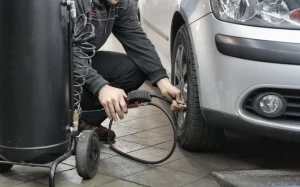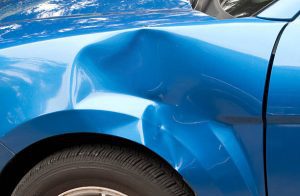The Ultimate Guide to Car Maintenance


The Ultimate Guide to Car Maintenance: Keeping Your Vehicle in Top Shape


Owning a car comes with the responsibility of regular maintenance to ensure its longevity, performance, and safety. By following a comprehensive car maintenance routine, you can avoid costly repairs and keep your vehicle running smoothly. In this ultimate guide, we’ll provide you with a step-by-step breakdown of essential car maintenance tasks. Let’s dive in!
1. Regular Inspection
A routine inspection helps you identify potential issues early on and take necessary action. Here are the key areas to inspect:
Fluid Levels
Regularly check the levels of engine oil, coolant, brake fluid, power steering fluid, and windshield washer fluid. Refer to your car’s manual for instructions on checking and topping up these fluids.
Tires
Check the tire pressure, including the spare tire, using a reliable pressure gauge. Inspect the tire treads for wear and tear and ensure they meet the recommended depth. Rotate the tires according to your car manufacturer’s guidelines.
Lights
Check all exterior lights, including headlights, taillights, turn signals, and brake lights. Replace any bulbs that are burnt out or not functioning properly.
Brakes
Listen for any squeaking or grinding noises when braking and have the brake pads and rotors inspected regularly. If you notice any issues with braking performance, have your brakes checked by a professional mechanic.
2. Oil Changes
Regular oil changes are crucial for the health of your engine. Follow these steps:
Step 1: Gather the Supplies
Get a new oil filter, the recommended type and quantity of engine oil, an oil filter wrench, and a drain pan.
Step 2: Prepare the Car
Ensure the engine is cool and parked on a level surface. Put on safety gloves and eye protection.
Step 3: Drain the Old Oil
Locate the oil drain plug underneath the car, place the drain pan beneath it, and remove the plug using a wrench. Let the old oil drain completely.
Step 4: Replace the Oil Filter
Remove the old oil filter using an oil filter wrench. Apply a thin layer of new oil to the rubber gasket of the new oil filter and install it by hand. Tighten it according to the manufacturer’s instructions.
Step 5: Add New Oil
Replace the drain plug, and using a funnel, pour the recommended amount of new oil into the engine. Check the oil level using the dipstick, and add more if necessary.
Step 6: Dispose of the Old Oil
Dispose of the old oil and oil filter at a recycling center or an authorized collection point.
3. Tire Maintenance
Proper tire maintenance ensures optimal performance and safety. Follow these steps:
Step 1: Check Tire Pressure
Regularly check the tire pressure using a pressure gauge and inflate them to the recommended levels specified by the car manufacturer. Properly inflated tires improve fuel efficiency and handling.
Step 2: Rotate Tires
Rotate the tires at regular intervals, as recommended in your car’s manual. This promotes even tread wear and extends the lifespan of the tires.
Step 3: Wheel Alignment and Balancing
Have the wheel alignment and balancing checked by a professional regularly. Proper alignment and balancing improve handling, tire wear, and fuel efficiency.
Step 4: Inspect Tread Wear
Regularly inspect the tire treads for signs of uneven wear, bulges, or damage. If you notice any abnormalities, have a tire professional assess them.
4. Battery Maintenance
Proper battery maintenance ensures reliable starting power. Follow these steps:
Step 1: Clean Battery Terminals
Inspect the battery terminals for any corrosion or buildup. If necessary, clean them with a mixture of baking soda and water using a wire brush. Rinse with clean water and dry with a cloth.
Step 2: Check Battery Fluid
For non-maintenance-free batteries, check the fluid level. If it’s low, add distilled water to the appropriate level. Avoid overfilling.
Step 3: Test Battery Voltage
Using a multimeter, test the battery voltage. If the voltage is low or the battery fails the test, it may need to be replaced.
5. Fluid Replacement
Regularly replacing fluids is essential for the proper functioning of various vehicle components. Here are the key fluids to consider:
Engine Coolant
Flush and replace the engine coolant according to the manufacturer’s recommendations. This helps prevent overheating and protects the engine from corrosion.
Brake Fluid
Regularly check the brake fluid level and color. If it appears dark or contaminated, it may be time to flush and replace the brake fluid. Consult your car’s manual for the recommended intervals.
Transmission Fluid
Follow the manufacturer’s instructions for checking and replacing the transmission fluid. Some vehicles have sealed transmissions that do not require regular fluid changes, while others have a recommended interval for fluid replacement.
Power Steering Fluid
Inspect the power steering fluid level regularly and top it up if necessary. If the fluid appears dirty or has a burnt smell, it may need to be flushed and replaced.
6. Air Filter Replacement
The air filter prevents contaminants from entering the engine. Replace it regularly:
Step 1: Locate the Air Filter Housing
Refer to your car’s manual to locate the air filter housing. It is usually a black plastic box near the engine.
Step 2: Remove the Old Air Filter
Open the housing and remove the old air filter. Inspect it for dirt and damage.
Step 3: Install the New Air Filter
Insert the new air filter into the housing, ensuring it fits securely. Close the housing and make sure it is properly sealed.
7. Regular Professional Servicing
While many car maintenance tasks can be done at home, it’s essential to schedule regular professional servicing. A qualified mechanic can perform comprehensive inspections, tune-ups, and address any specific issues or concerns.
Conclusion
Maintaining your car properly is essential for its longevity, performance, and safety. By following this ultimate guide to car maintenance, you can keep your vehicle in top shape and avoid expensive repairs down the road. Remember to consult your car’s manual for specific maintenance requirements and intervals. Regular inspections, oil changes, tire maintenance, battery care, fluid replacement, air filter replacement, and professional servicing are key elements of a comprehensive car maintenance routine. Take care of your car, and it will take care of you!








